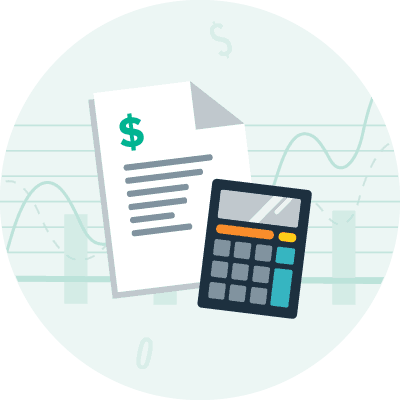What Is Cash Flow?
REtipster does not provide tax, investment, or financial advice. Always seek the help of a licensed financial professional before taking action.
The Importance of Cash Flow
Positive cash flow is the lifeblood of a business. Cash flow opens up new opportunities to build an investment portfolio, provides a cushion against unexpected expenses, and allows an operator to maintain a more predictable annual budget based on the income that comes in at regular intervals. The higher the cash flow, the better the ultimate return on investment.
Positive cash flow indicates the organization has enough money to pay its debts and expenses, reinvest in profitable lines of business, and provide a cushion against unexpected costs.
The Cash Flow Formula
How to Analyze Cash Flow
Financial analysts use different metrics to evaluate cash flow in relation to profitability and liquidity.
The debt service coverage ratio (DSCR) measures whether an organization has the cash flow to settle short-term liabilities. DSCR is an expression of liquidity.
DSCR = Net Operating Income (NOI) / Debt Service (short-term debt obligations)
Free cash flow (FCF) is a measure of profitability that some analysts believe[1] is more accurate than net income because it reflects the leftover cash in an organization. In turn, it can use this cash to expand operations or return to shareholders.
FCF = Operating Cash Flow – Capital Expenditures
Cash Flow vs. Profit
Cash flow is a measure of liquidity. When a company has positive cash flow, its liquid assets are increasing.
Profit is left after an organization’s total expenses are subtracted from total revenue. Profit is the ultimate performance metric.
An organization can turn a profit but still have negative cash flow. For example, a business that carries a large balance of accounts receivable on its books may not have the liquidity to meet expenses.
On the other hand, a business may have positive cash flow but still be unprofitable. This is because cash flow can be “bought,” either through a business loan or an injection of the owner’s capital.
What is Cash Flow in Real Estate?
Cash flow is an important metric with income-producing properties as it reflects the difference between the property’s income and its debt and operating expenses.
The gross income for a rental property includes rent as well as other sources of income, such as late fees, pet fees, and revenue from laundry machines. Expenses include taxes, insurance, repairs and maintenance, management fees, utilities, and miscellaneous business expenses.
The following chart shows a simplified calculation for the monthly cash flow of a fully occupied triplex.
| + Rental Income | $3,600 |
| + Pet and Parking Fees | $300 |
| Gross Income | $3,900 |
| – Taxes and Insurance | $225 |
| – Water, Trash, Sewer | $150 |
| – Repairs and Maintenance (10%) | $360 |
| – Miscellaneous Expenses | $100 |
| Total Expenses | $835 |
| – Debt Service | $1,200 |
| Monthly Net Cash Flow | $1,865 |
Cash Flow and ROI
There is a direct correlation between positive cash flow and return on investment (ROI) in real estate. One of the simplest ways to calculate ROI is to divide cash flow by the total amount invested.
ROI = Cash Flow / Total Investment
For example, assume Lucy, the landlord, purchased the building above for $175,000 and spent $25,000 on renovations for a total investment of $200,000.
Her ROI on the triplex is 11%
$1,865 x 12 = $22,380 / $200,000 = 11%.
RELATED: Find the ROI for your project in seconds with the REtipster ROI Calculator
The 1% Rule and Cash Flow
The 1% Rule is sometimes used by real estate investors to estimate a property’s potential to generate cash flow[2]. According to the rule, a property should generate rent income equal to at least 1% of the purchase price, plus any repairs and renovations, each month.
When applying this rule to the example above, it should rent for at least $1,000 per month (1% of $100,000).
The 1% rule should be used as a rough baseline calculation (if at all), because it does not account for variations in property taxes, debt expenses, HOA dues, and local market conditions.
What Is Real Estate Cash Flow Investing?
Cash flow investing in real estate is similar to investing in dividend stocks. The idea is to invest in real estate assets that generate regular cash distributions in the form of rent payments.
People who invest in buy-and-hold real estate are practicing cash flow investing. Real estate investment trusts, or REITs, are another example of cash flow investments[3]. Real estate platforms such as RealtyMogul and Fundrise also let accredited and non-accredited investors buy into professionally managed commercial properties, which is a hands-off way to get into passive cash flow investing.
Takeaways
In accounting terms, cash flow is a measure of liquidity. For real estate investors, positive cash flow is a measure of profitability and directly linked to return on investment. Market rents and debt service have the most impact on real estate cash flow.
Investors need to understand the relationship between cash flow and ROI to achieve their investment goals. Knowing how to calculate cash flow correctly increases the odds of investing in profitable properties.
Sources
- Trainer, D. (2014.) Why Free Cash Flow is the Most Useful Metric for Investors. New Constructs. Retrieved from https://www.newconstructs.com/why-free-cash-flow-is-the-most-useful-metric-for-investors/
- Christensen, Kate. (n.d.) 1% and 2% Rules in Real Estate Investing. Real Wealth Network. Retrieved from https://www.realwealthnetwork.com/learn/1-percent-rule-2-percent-rule-real-estate-investing/
- Frankel, M. (n.d.) Investing in REITs Basics. Millionacres – The Motley Fool. Retrieved from https://www.fool.com/millionacres/real-estate-investing/reits/





